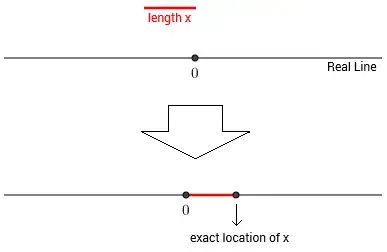This question was a part of a discussion at an interview.
QUESTION: How can you determine rigorously if $e$ or $\pi$ are points on the real line?
MY OPINION: They should be, since they are defined to be real and irrational in nature. But then again they are transcendental numbers. I have read about the density of rational and irrational numbers in the real line, not about transcendental numbers. Also $e$ and $\pi$ have their values as per strict definitions imposed on them.
Can anyone state a theorem or some lemma which can solve this problem? Or any other idea is also welcome.
EDIT: For further clarification of my question, I wanted to actually ask that $e$ or $\pi$ are real numbers, no doubt but are there distinct points on the line which represent them? I mean, can you pick out those points that this and this are the points. The given answers have shown that they are there on the line. But is it just that their presence on the real line can be established but the exact location of the points cannot be proved?

